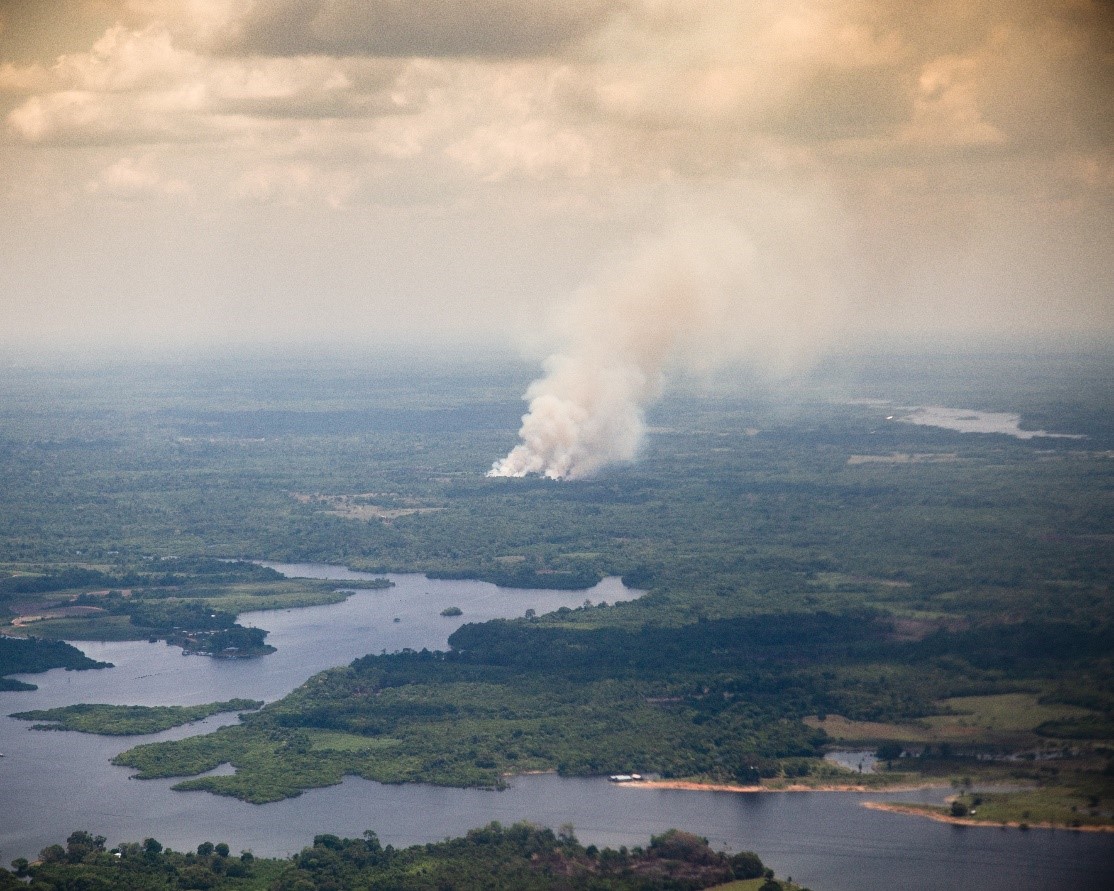Amazon rainforest fires produce secondary ultrafine particles that may affect weather and climate
Submitter
Shrivastava, Manishkumar — Pacific Northwest National Laboratory
Fan, Jiwen — Argonne National Laboratory
Area of research
Cloud-Aerosol-Precipitation Interactions
Journal Reference
Science
Particles in wildfire smoke can lower air quality and harm human health. Smoke aerosols can also influence weather and climate by modifying cloud formation and changing how much of the sun’s energy is reflected or absorbed by the atmosphere. Compared to larger particles directly emitted from fires, the formation and presence of ultrafine particles (UFPs) have previously been overlooked, as it was thought that they were quickly ‘scavenged’ by the larger particles. By analyzing aircraft measurements and conducting detailed model simulations, researchers found that ultrafine particles were abundant in the smoke from vegetation fires in the Amazon, and their formation and survival were favored. Furthermore, high-resolution modeling showed that these ultrafine particles may intensify storm clouds and heavy rain. This research deepens our understanding of how vegetation fires produce aerosols that may impact weather and climate change.
Impact
Earth system models have not considered secondary UFPs formed by nucleation and growth of species formed by chemical oxidation in biomass burning smoke, since previous understanding suggests large losses of nucleating species to primary smoke particles. Contrary to traditional understanding, researchers identified efficient nucleation and growth mechanisms producing nucleating species in smoke that could overcome their losses to primary smoke particles, thereby sustaining nucleation and forming many UFPs in smoke. This work is expected to fill a major gap in the process understanding of UFPs and opens new research frontiers by highlighting the large potential impacts of UFPs formed in biomass burning smoke on clouds, rain, weather and climate, which have been overlooked previously.
Summary
New particle formation in fire smoke is thought to be unlikely due to large condensation and coagulation sinks that scavenge molecular clusters. By analyzing the Department of Energy (DOE) G-1 aircraft measurements over the Amazon rainforest, researchers identified abundant UFPs present in fresh vegetation fire smoke. Using detailed regional modeling with the Weather Research and Forecasting Model coupled to chemistry (WRF-Chem), they elucidated key mechanisms that explain the formation of UFPs in biomass smoke. Their analyses suggest that to maintain the observed UFP concentrations and overcome the large losses of nucleating species to primary biomass burning aerosols, the biomass burning emissions of dimethyl amines (DMA) and the chemical production of sulfuric acid and extremely low volatility organic gases in smoke need to be increased proportionally to the observed particle size distributions in smoke. To simulate the impacts of UFPs and the larger particles in smoke on clouds and precipitation, the researchers fed the particle size distributions and hygroscopicity profiles simulated by WRF-Chem to a detailed cloud microphysics model, the WRF with spectral bin cloud microphysics (SBM). The fine resolution WRF-SBM simulations showed that UFPs may cause a stronger storm with a larger anvil and heavier rain, while the larger particles directly emitted by fires delay and suppress rain.


